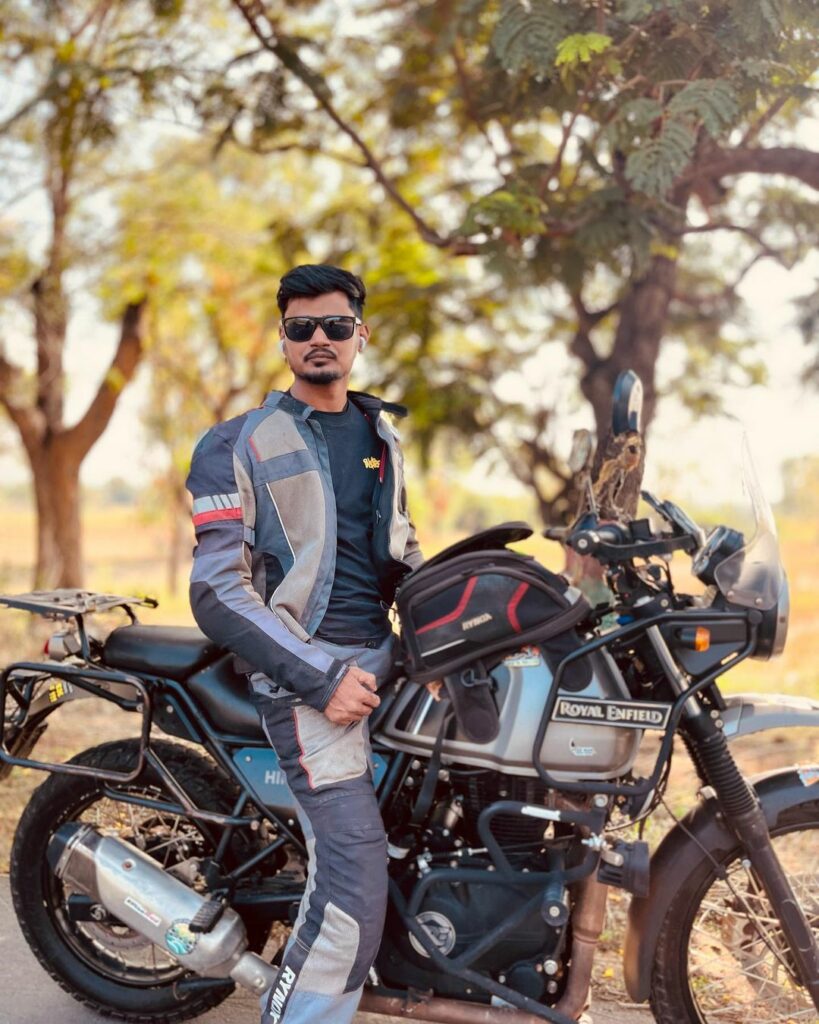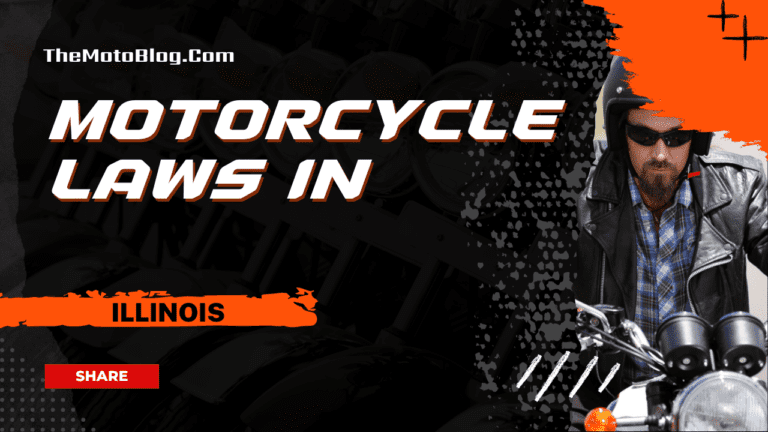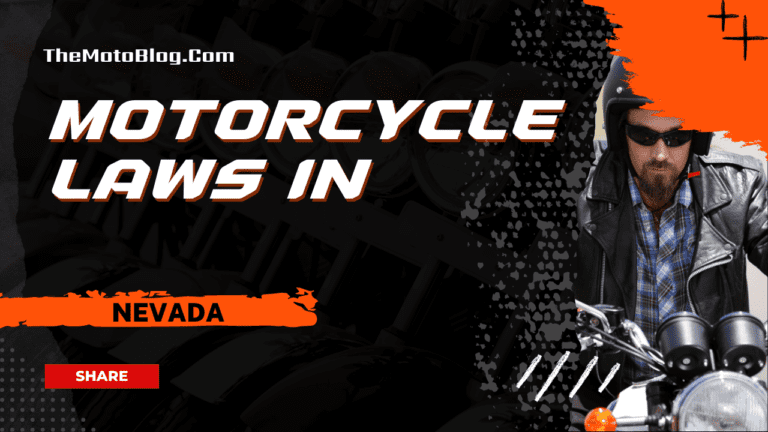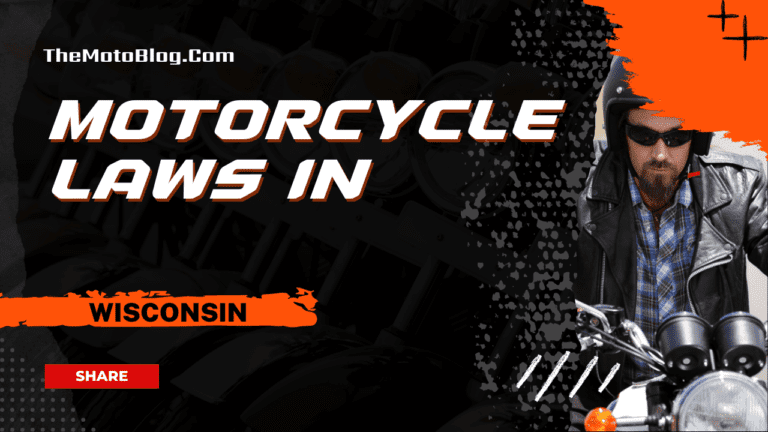Motorcycle Laws in New York: A Detailed Guide for Riders
Navigating New York’s bustling streets on two wheels can be quite an exhilarating experience. However, before you rev up your engine and hit the road, there are a few motorcycle laws in New York that you should be aware of. Understanding these regulations is essential not only for your safety but also to ensure that you’re riding within the boundaries of the law.
Key Takeaways
- New York State has specific laws related to motorcycle riding.
- All motorcyclists and passengers under 18 must wear a helmet.
- Motorcycles must use headlights even during daytime.
- Lane splitting (driving between two lanes of stopped/slow cars) is not allowed.
- Every motorcycle must carry liability insurance as per state requirements.
- According to Federal Motor Vehicle Safety Standard #218, specific manufacturing standards must be met by the helmets.
- Riders must wear goggles or face shields approved by the American National Standards Institute (ANSI Z87.1) if the motorcycle isn’t equipped with windscreens.
- The process of getting a motorcycle license in New York requires passing a written test, acquiring a learner’s permit, practicing riding, and passing a road test.
- Motorcycle insurance is mandatory, with minimum coverage for bodily injury and property damage liability.
- Lane splitting is illegal in New York, however, two motorbikes can share a lane side by side under certain conditions.
- Speed limits apply equally to motorcyclists and other motorists with fines up to $600 per violation for exceeding the limits.
- New York has strict DUI/DWI laws, with fines and penalties for offenders.
- Helmets and eye protection gear are mandatory and must meet federal safety standards. Daytime use of headlights is compulsory for bikes made after ’79.
- Any violation of motorcycle laws can result in fines ranging from $100 to $200 or imprisonment for up to 30 days.
Motorcycle laws in New York are tailored to ensure safety and compliance on the road. Helmets are mandatory for all riders, and eye protection is required unless the bike is equipped with a windscreen. When examining the neighboring states, a variety of different requirements and regulations can be found. For example, motorcycle laws in New Jersey also mandate helmets, aligning closely with New York’s policy. Similarly, motorcycle laws in Pennsylvania enforce helmet wearing for those under 21 or who have had their license for less than two years. The motorcycle regulations in Connecticut have specific rules concerning training, helmets, and lane splitting, while motorcycle laws in Massachusetts focus heavily on safety gear and education. Traveling motorcyclists need to be aware of the differences in motorcycle laws among these Northeastern states to comply with various statutes and cultivate a safe riding environment.
Understanding New York’s Motorcycle Laws
When it comes to navigating the streets of New York, there are a few rules motorcyclists should know. First off, you’ve got to wear a helmet. It’s not up for debate; this is mandated by law in the Empire State.
New York has some specific laws regarding passengers as well. You can’t just have anyone hop on your bike for a ride around the city. The passenger must be at least 5 years old and if they’re under 18, they need to wear a helmet too.
Here’s something you might not know: motorcycles in New York must use headlights, even during daylight hours! The state law requires that your lights remain on half an hour after sunset until half an hour before sunrise or whenever visibility is less than 1000 feet.
A couple more things I’d like you to keep in mind: lane splitting isn’t allowed in New York – that’s when motorcycles drive between two lanes of stopped or slowly moving cars – basically weaving through traffic.
All motorcycles must carry liability insurance as per state requirements.
Helmets and Protective Gear: Requirements in NY
New York State Vehicle and Traffic Law Section 381(6) clearly mandates that all motorcyclists must wear a helmet. It doesn’t matter whether you’re an experienced rider cruising down interstate highways or a newbie just picking up the hobby, this requirement applies to everyone.
Now, here comes an interesting part – not any helmet will do. According to Federal Motor Vehicle Safety Standard #218, your helmet must meet specific manufacturing standards for optimal safety. So if you’ve got a stylish cap that’s more fashion than function, you’ll need to think again!
The law is firm on eye protection too. It expects riders to wear goggles or face shields approved by the American National Standards Institute (ANSI Z87.1) if their motorcycle isn’t equipped with windscreens.
Here’s a quick summary of NY motorcycle gear requirements:
| Requirement | Details |
|---|---|
| Helmet | Must be worn by all riders; Must meet Federal Motor Vehicle Safety Standard #218 |
| Eye Protection | Required if no windscreen present; Must be ANSI Z87.1 compliant |
You might be wondering where this leaves room for individuality? Don’t worry! There are still plenty of options when it comes to choosing gear that suits your style while also meeting legal requirements.
- Customized helmets: Plenty of manufacturers offer helmets that meet safety standards yet provide space for customization.
- Various styles of eye protection: Look for those marked “Z87+,” which indicates they’ve passed high-impact testing.
- Comfortable riding gear: Opting for jackets, pants or gloves made from abrasion-resistant materials can provide added protection.
The Nitty-Gritty of Motorcycle Licensing in NY
Motorcycle licensing in New York is no small feat. It’s a process that requires careful attention to detail and adherence to the guidelines set forth by the New York State Department of Motor Vehicles (DMV). Let’s dive into what this entails.
Firstly, you’ll need to get your motorcycle learner’s permit. To do this, you must pass a written test that covers basic road rules for motorcycles. You should be at least 16 years old and if you’re under 18, parental consent is mandatory.
Once you’ve got your learner’s permit, practice is key! With a permit, you can ride from sunrise to sunset and never carry passengers or ride on any interstate highways. Remember: practice makes perfect!
Next up is passing the road test! But before that, there are some prerequisites like completing a New York State Motorcycle Safety Program (NYSMSP) Basic Rider Course (BRC), which not only waives the DMV’s road test but also enlightens riders about safe riding techniques.
Here are some key points about NY motorcycle laws:
- Helmet use: It’s not just recommended—it’s legally required.
- Eye protection: Also required unless your bike has an approved windshield.
- Daytime use of headlight: Mandatory!
- Lane splitting: Not allowed.
Let me share with you some crucial data pertaining to motorcycle endorsement fees:
| Endorsement Type | Fee ($) |
|---|---|
| Class M or MJ | 12.50 |
| Class L or LJ | 12.50 |
Compulsory Insurance for Motorcycles: What’s Required?
When it comes to riding motorcycles in New York, there’s one thing you can’t ignore – insurance. It’s not just a good-to-have, it’s the law. In fact, New York State requires all motorcycle owners to carry liability insurance. Let me dive into the specifics.
Under this mandate, your insurance policy must include minimum coverage amounts for bodily injury and property damage liability. Here are those numbers:
| Coverage | Minimum Required Amount |
|---|---|
| Bodily Injury per Person | $25,000 |
| Bodily Injury per Accident | $50,000 |
| Property Damage Liability per Accident | $10,000 |
So if you’re involved in an accident – regardless of who’s at fault – this policy ensures that there are funds available to cover damages.
But wait! There’s more to consider beyond these compulsory figures. You may also want to think about optional coverage types like collision or comprehensive insurance. While they aren’t required by law, these policies offer additional protection that could be invaluable in case of an accident or theft.
Remember though; while adding extra coverage increases your safety net, it’ll also raise your premiums. It’s always best to weigh the benefits against the costs when considering additional coverage options.
Now let me clarify a common misconception – New York does NOT require motorcycle riders to carry no-fault (personal injury protection) insurance as is mandatory for auto drivers. This type of insurance typically covers medical expenses or lost wages related to an accident irrespective of fault but unfortunately doesn’t extend its reach to motorcyclists in our state.
Lane Splitting and Sharing: Legal or Not?
Lane splitting, if you’re not familiar with the term, is when a motorcyclist rides between lanes of slow-moving or stopped traffic. It’s a common sight in many places around the globe.
The Empire State follows a staunch ‘No’ policy when it comes to lane splitting. You heard me right – lane splitting is illegal in New York! This rule applies regardless of whether traffic is moving or at standstill. Motorcyclists who choose to flout this law could find themselves slapped with fines or points on their license.
But what about lane sharing? That’s another story altogether. In certain situations, two motorbikes can share a lane side by side in New York. However, there are caveats:
- Both riders must agree to ride together.
- No more than two motorcycles can share one lane.
- Lane sharing isn’t allowed on roads where the speed limit exceeds 50 mph.
While these rules may seem strict, they’re established for all our safety – both motorcyclists and motorists alike.
How Speed Limits Apply to Motorcyclists in NY
Let’s dive into the specifics of how speed limits apply to motorcyclists in New York. First and foremost, it’s important to know that motorcycle riders are subject to the same speed limits as other motorists. That means if you’re on a bike, you’ve got to adhere strictly to the posted speed regulations.
Motorcycles, like cars, can be ticketed for exceeding the maximum allowable speed. In residential areas, this typically hovers around 25 mph, while highways and expressways may allow speeds up to 55 or 65 mph. Here’s a quick look at common speed limits:
| Location | Speed Limit |
|---|---|
| Residential Areas | 25 mph |
| Highways/Expressways | 55-65 mph |
Now, let’s address some misconceptions about motorcycles and speed. You might have heard bikers say they’re immune from speeding tickets – but that couldn’t be further from the truth! Just because your ride is smaller and more nimble doesn’t mean you can zip through traffic without consequences.
In fact, New York has been cracking down on reckless riders with increased fines and penalties for violations such as speeding or reckless driving. And trust me when I say this: those fines aren’t small change! They range from $90 up to $600 per violation.
- Fines start at $90
- They can escalate up to $600 per violation
- Reckless driving charges may lead to jail time
Remember that these laws aren’t just there for show – they’re designed with safety in mind. High-speed accidents involving motorcycles often result in serious injuries or fatalities due mainly to the lack of protection compared with automobiles.
DUI/DWI Laws for Motorcyclists: A Close Look
Navigating the streets of New York on a motorcycle can feel like an exhilarating adventure. But it’s vital to know the law, especially when it comes to driving under the influence (DUI) or driving while intoxicated (DWI). These laws impact motorcyclists just as much as any other driver on the road.
New York has strict measures in place to discourage impaired driving. If you’re caught with a blood alcohol concentration (BAC) of 0.08% or higher, you’ll be charged with a DWI. Even if your BAC is lower, between 0.05% and 0.07%, you could still face a charge of driving while ability impaired by alcohol (DWAI/Alcohol).
Here’s how penalties stack up:
| Offense | Fine | Jail Time | License Suspension |
|---|---|---|---|
| First DWI/DWAI Alcohol | $500-$1000 | Up to 1 year | Min. 6 months |
| Second DWI within 10 years | $1000-$5000 | Up to 4 years | Min. 1 year |
| Third DWI within 10 years | $2000-$10,000 | Up to 7 years | Min. 1 year |
Of course, these figures represent only part of the story because additional penalties may apply depending on circumstances.
Keep in mind, too, that New York operates under “Implied Consent Law”. This means that if you refuse a breathalyzer test when stopped by law enforcement officials suspecting DUI/DWI, your license will automatically be suspended for at least one year.
For motorcyclists specifically:
- Helmets are mandatory; they must meet federal safety standards.
- Eye protection is required unless your bike has a windscreen.
- Daytime use of headlights is compulsory for bikes made after ’79.
Penalties for Violating Motorcycle Laws
First and foremost, riding without a helmet is a major violation. It’s not just about safety – it’s the law. If you’re caught without one, you’re looking at a fine that can range from $100 to $200, or even imprisonment for up to 30 days.
Next on the list is speeding. We all know how thrilling it can be to let loose on an open road but remember – speed limits are there for your own good. Exceed them and you could face fines ranging from $90 to $600, plus surcharges of up to $88.
Let me also mention drunk driving, which is certainly not taken lightly by the state of New York. A rider found guilty of DUI faces severe penalties including hefty fines (from $500 up to as much as $10,000), suspension or revocation of license and possible jail time.
Wrapping Up: Staying on the Right Side of NY Motorcycle Laws
I’ve spent this article breaking down New York’s myriad of motorcycle laws. Now, let’s tie it all together and make sure you’re equipped to stay on the right side of these regulations.
Firstly, remember that helmet use is not just a safety recommendation in NY—it’s the law. Both you and your passenger must don helmets approved by the Department of Transportation (DOT). Eye protection is also mandatory unless your bike is fitted with a windscreen.
Also, keep in mind:
- Motorcycles need to pass an annual inspection.
- Modified handlebars aren’t allowed if they raise the rider’s hands above shoulder level.
- Lane splitting isn’t legal in New York.
Remember that insurance isn’t optional either; it’s a requirement. The minimum coverage amounts are as follows:
| Coverage | Minimum Amount |
|---|---|
| Bodily Injury | $25,000 |
| Total bodily injury | $50,000 |
| Property Damage | $10,000 |
Lastly, don’t forget about motorcycle licensing. You’ll need a Class M or MJ operator’s license or learner’s permit. If you’re new to biking or looking for some extra training, consider taking an approved New York State Motorcycle Safety Program (NYSMSP) course.
Compliance with these laws will not only help you avoid fines but will also ensure your safety—and that of others—on the road. So gear up correctly, abide by traffic rules and ride within your skills limit!
Motorcycle Laws in the US By States
If you liked this article, then please subscribe to our YouTube Channel for more Bike Videos. You can also find us on Instagram, Twitter and Facebook.
Disclosure: As an Amazon Associate, I earn from qualifying purchases. Read more about Amazon Affiliate Disclaimer.

Vishwanath Mathpati
I am Vishwanath Mathpati, a full-time Blogger and Motorcyclist from Bidar, Karnataka. I love writing about my Motorcycles Stories and Riding Gears on this blog.
Know More About Me.







